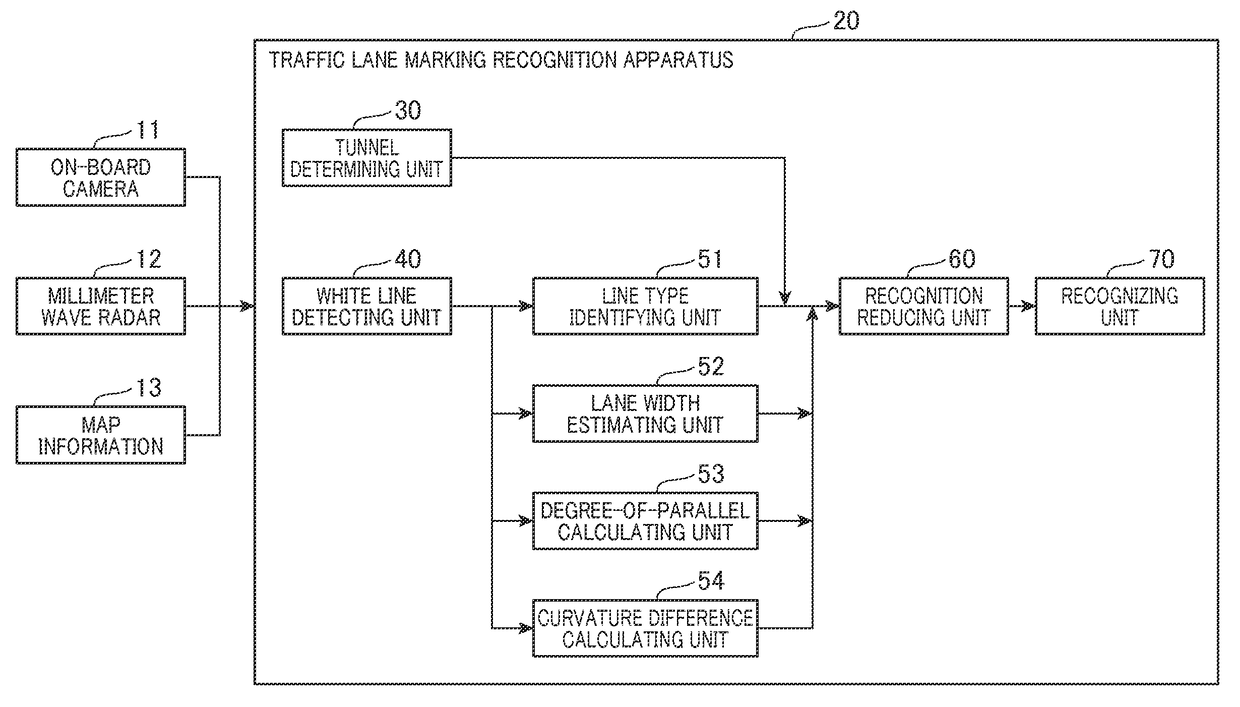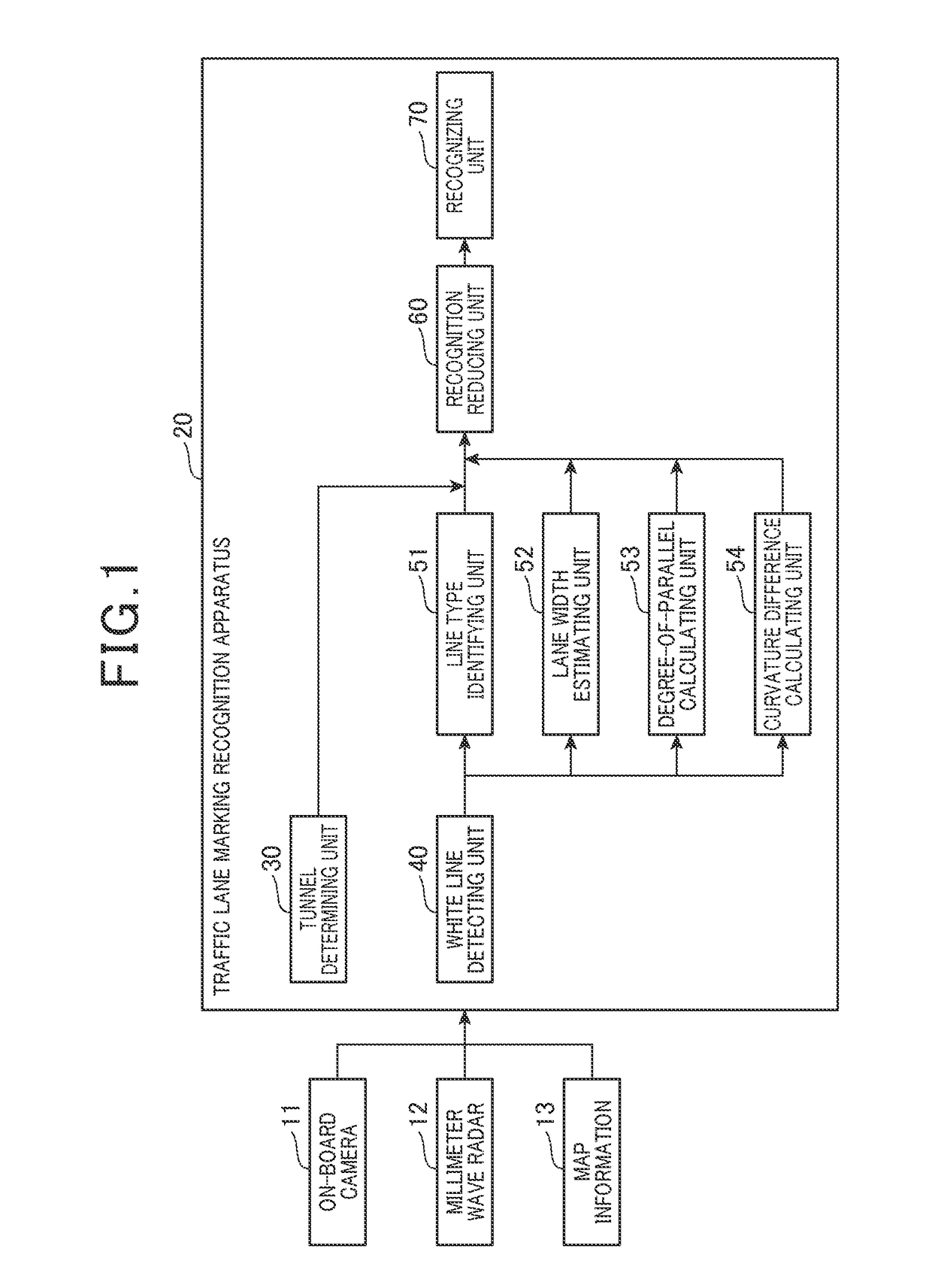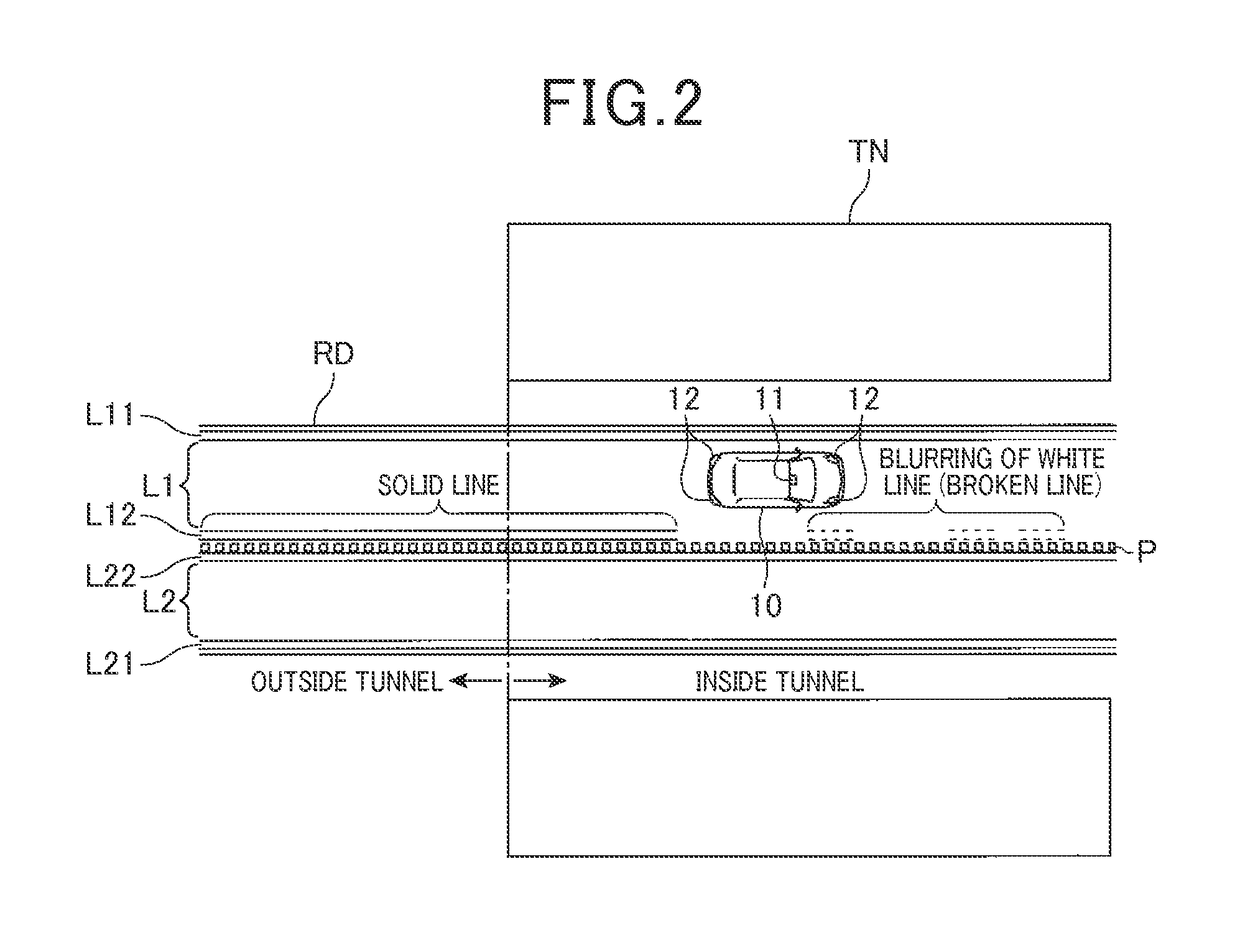Traffic lane marking recognition apparatus and traffic lane marking recognition program
a technology of traffic lane marking and recognition apparatus, which is applied in the direction of instruments, computing, electric digital data processing, etc., can solve the problems of blurred white line, inconvenience for passengers, blurred white line, etc., and achieve the effect of suppressing the inability of driving assistance control resulting from erroneous recognition of lane dividing line upon entry into a tunnel
- Summary
- Abstract
- Description
- Claims
- Application Information
AI Technical Summary
Benefits of technology
Problems solved by technology
Method used
Image
Examples
first embodiment
(First Embodiment)
[0035]First, a configuration of a traffic lane marking recognition apparatus 20 according to the present embodiment will be described with reference to FIG. 1. The traffic lane marking recognition apparatus 20 according to the present embodiment is an on-board apparatus that recognizes white lines (corresponding to lane dividing lines or lane markings) that define traffic lanes on a road, using images captured by an on-board camera 11.
[0036]The on-board camera 11 is configured by at least one of a charge coupled device (CCD) camera, a complementary metal-oxide-semiconductor (CMOS) image sensor, a near infrared camera, and the like. As shown in FIG. 2, the on-board camera 11 is mounted in a vehicle 10 so as to capture images of the peripheral environment including the road ahead of the vehicle 10. Specifically, the on-board camera 11 is set near the upper end of the front windshield of the vehicle 10 and captures images of an area that spreads over a predetermined a...
second embodiment
(Second Embodiment)
[0096]A traffic lane marking recognition apparatus 20A according to a second embodiment differs from the traffic lane marking recognition apparatus 20 according to the first embodiment in terms of being able to recognize a portion of a detected white line candidate that can be regarded as a solid line even when a blurred white line candidate for a white line is detected, to improve stability of white line recognition. The white line herein refers to all lane dividing lines (lane markings) that define traffic lanes, including a yellow line. In the second embodiment, components or steps identical with or similar to those in the first embodiment are given the same reference numbers for the sake of omitting unnecessary explanation.
[0097]First, the differences from the traffic lane marking recognition apparatus 20 according to the first embodiment in the configuration of the traffic lane marking recognition apparatus 20A according to the second embodiment will be descr...
third embodiment
(Third Embodiment)
[0119]According to the second embodiment, no differentiation is made between when a white line that had originally been configured by a solid line has become blurred to include a gap, and when a white line has originally been configured by a broken line that includes a gap. When the white line candidate includes a gap, the probability of recognition of the white line candidate as a white line is uniformly reduced.
[0120]According to a third embodiment, when a white line that had originally been configured by a solid line has become blurred to include a gap, and when a white line has originally been configured by a broken line that includes a gap are differentiated. The probabilities of recognition of the white line candidate as a white line are set to differing values between these two cases. The differences from the second embodiment in the traffic lane marking recognition apparatus 20A according to the third embodiment will hereafter be described. In the third emb...
PUM
 Login to View More
Login to View More Abstract
Description
Claims
Application Information
 Login to View More
Login to View More - R&D
- Intellectual Property
- Life Sciences
- Materials
- Tech Scout
- Unparalleled Data Quality
- Higher Quality Content
- 60% Fewer Hallucinations
Browse by: Latest US Patents, China's latest patents, Technical Efficacy Thesaurus, Application Domain, Technology Topic, Popular Technical Reports.
© 2025 PatSnap. All rights reserved.Legal|Privacy policy|Modern Slavery Act Transparency Statement|Sitemap|About US| Contact US: help@patsnap.com



